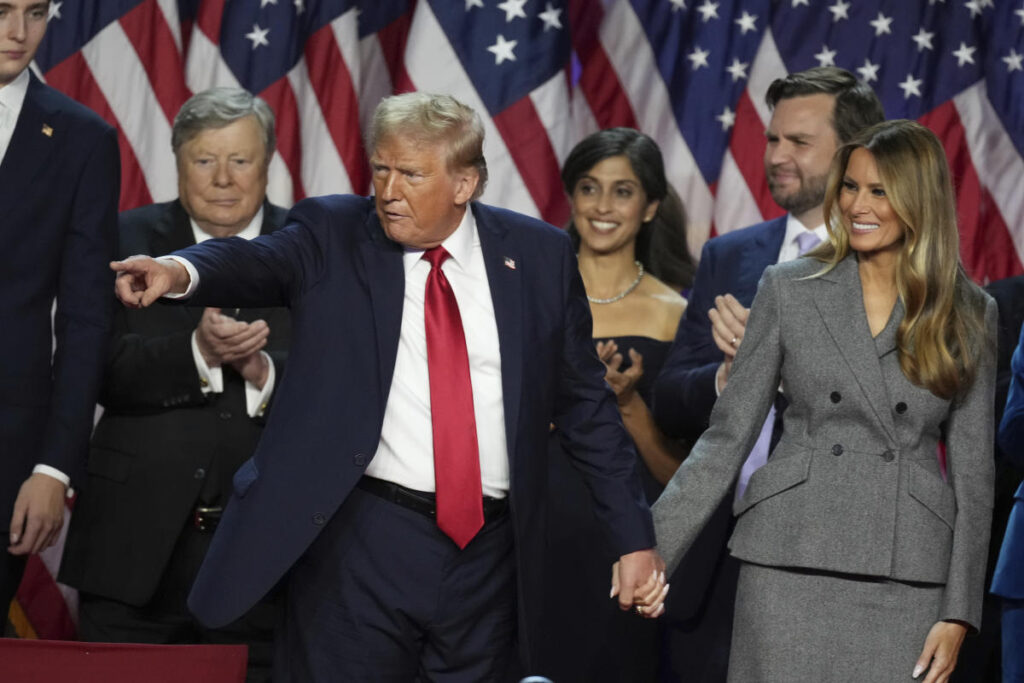Donald Trump’s anticipated return to the White House ushers in the need for a new administration distinct from the one led by President Joe Biden. This marks a pivotal moment as Trump aims to establish a completely fresh slate, driven by lessons learned during his first term that concluded in January 2021. With 75 days available before his inauguration on January 20, Trump’s primary objective is to assemble a team to fill approximately 4,000 political appointments across the federal government. These roles range from the cabinet level, such as the Secretary of State, to less visible positions on boards and commissions. Notably, around 1,200 of these appointments will necessitate Senate confirmation—a process that may be facilitated by the Republican control of the Senate, allowing for a more streamlined transition compared to previous administrations.
Trump’s approach to this transitional phase will be markedly different from the past, reflecting his desire to incorporate new ideologies and trusted allies into key positions. Early communication from Trump included the suggestion of enlisting Robert Kennedy Jr. to promote public health initiatives, aligning with Trump’s inclination to engage controversial figures. Moreover, the potential appointment of tech mogul Elon Musk as a secretary of federal “cost-cutting” is indicative of Trump’s strategy to apply business-like efficiency to government operations, aiming to uncover substantial budget cuts. The transition is not merely about appointing individuals; it is also essential for the incoming president to receive intelligence briefings to assimilate into the nation’s strategic and security landscape effectively.
Transition management is supported by an inner circle comprising family and close allies, ensuring that trust and loyalty are prioritized over experience. Notable figures include Trump’s sons, Donald Jr. and Eric, who will play integral roles, and JD Vance as the running mate. Assistance is also provided by Howard Lutnick, the CEO of Cantor Fitzgerald, and Linda McMahon, a former head of the Small Business Administration. Lutnick has articulated a commitment to crafting a transition process that diverges from his initial effort in 2016, which was marred by a lack of cohesion and divergence from planned initiatives. This time, Trump’s focus on loyalty is likely to reinforce his preference for appointment candidates who share ideological alignments and personal rapport over broader political experience.
Unlike the Democratic Vice President Kamala Harris’s campaign team, which established transition agreements pre-Election Day, Trump’s team has not engaged the General Services Administration (GSA) beforehand. This oversight has led to missed opportunities for logistical arrangements essential for a smoothly executed transition, including accessing necessary resources and personnel within the federal framework. The lack of prearrangements could deepen operational challenges as the administration seeks to adapt and implement its agenda swiftly upon entering office.
Structural changes introduced through the Presidential Transition Improvement Act of 2022 aim to avert delays in future transitions, particularly in the instance of contested elections. This legislation stipulates that the transition must commence five days post-election, eliminating the requirement for an affirmative ascertainment by the GSA that had previously hindered funding and resources from flowing to the incoming administration. These adaptations take into account lessons learned from the contentious 2000 election cycle between George W. Bush and Al Gore, which underscored the risks of extended transitions, especially concerning national security.
The implications of these new rules reflect a broader context of electoral integrity and the importance of preparedness as administrations switch. Trump’s prior experience with the transition process reveals the complexities and potential pitfalls of managing government rotations, particularly in a contentious political climate. The expectations from his upcoming transition team suggest a focus on implementing robust policy changes quickly while navigating the political landscape adapted for rapid governmental change, positioning Trump to influence the direction of his second term fully. As the inaugural date approaches, scrutiny will likely intensify regarding his choices and the overall direction his administration will take.

